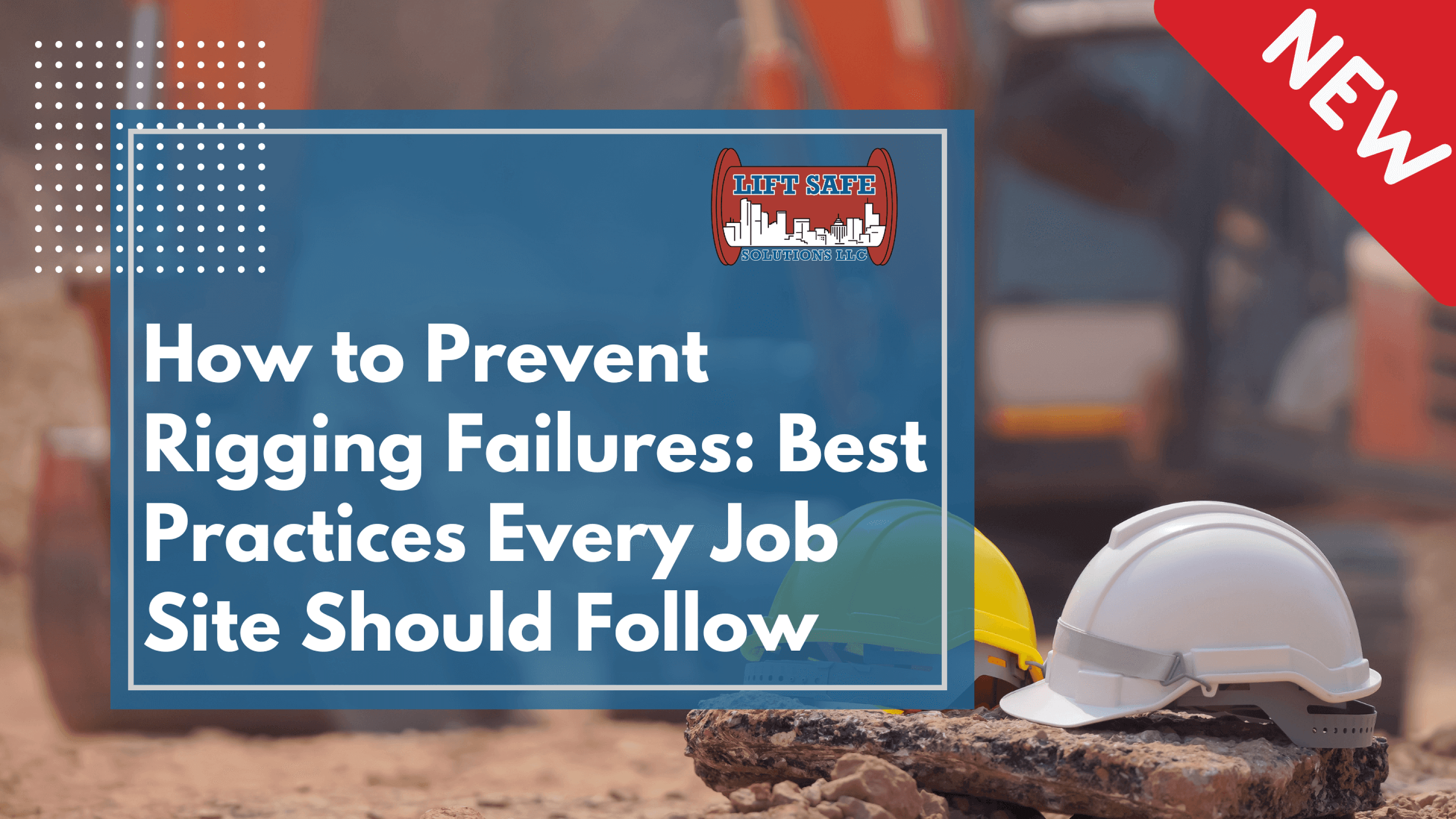Every lift on a construction site depends on one thing: proper rigging. No matter how powerful the crane, the success of the operation comes down to whether the load is secured, balanced, and lifted safely. Yet rigging failures remain one of the leading causes of crane-related accidents worldwide.
The good news? Rigging accidents are preventable. With the right training, inspections, and protocols, contractors can protect workers, equipment, and project schedules. In this blog, we’ll break down the most common causes of rigging failures, share rigging safety best practices, and explain how partnering with a crane safety consultant can help you stay compliant and accident-free.
Why Rigging Safety Matters
Rigging may seem like a straightforward process, but it involves multiple technical considerations: load weight, sling angles, hitch configurations, and environmental conditions. A single miscalculation can have devastating results.
- Injury Risks: Rigging failures often lead to falling loads, which pose serious threats to workers.
- Equipment Damage: A dropped load can damage cranes, structures, or expensive building materials.
- Legal Liabilities: Contractors may face OSHA citations, lawsuits, and insurance claims if rigging safety is neglected.
Common Causes of Rigging Failures
Understanding what goes wrong is the first step toward prevention.
-
Overloading Rigging Equipment
Exceeding the working load limit (WLL) of slings or shackles is a common and dangerous mistake.
-
Using Damaged Gear
Frayed wire ropes, bent hooks, or cracked shackles should never be used—but without inspections, they often slip through.
-
Improper Load Balancing
Unevenly distributed loads create dangerous swinging and unexpected shifts during lifting.
-
Poor Communication
Misunderstood hand signals or unclear radio calls between operators and riggers can cause catastrophic timing errors.
-
Untrained Personnel
Allowing unqualified workers to handle rigging puts the entire crew at risk.
Rigging Safety Best Practices Every Site Should Follow
-
Only Use Qualified Riggers
OSHA requires qualified riggers for certain crane operations. A qualified rigger knows how to:
- Determine sling angles.
- Calculate load weights.
- Inspect rigging gear before use.
-
Inspect Rigging Equipment Daily
Before every lift, rigging gear should be checked for:
- Wear, corrosion, or fraying.
- Proper certification tags.
- Signs of overload or deformation.
-
Match Gear to the Load
Never guess the weight of a load. Always use load charts and ensure slings, shackles, and spreader bars are rated for that weight.
-
Use Proper Sling Techniques
- Vertical hitch for straight lifts.
- Choker hitch for securing cylindrical loads.
- Basket hitch for balanced lifts.
-
Maintain Clear Communication
Standardized hand signals and reliable radios are non-negotiable. Miscommunication is one of the easiest risks to prevent.
-
Secure the Work Area
Keep unauthorized personnel away from lift zones. No worker should ever stand under a suspended load.
Training: The Key to Preventing Rigging Failures
Rigging equipment is only as safe as the person using it. That’s why ongoing training is essential:
- Refresher courses keep experienced riggers sharp.
- New employees must be trained on both OSHA rules and company-specific protocols.
- Safety consultants can tailor training to the unique hazards of your job site.
How Safe Lift Solutions Can Help
At Safe Lift Solutions, we specialize in rigging safety consulting and training. Our services include:
- Rigging safety courses for operators and riggers.
- Site-specific safety audits.
- Inspection programs to catch issues before accidents occur.
- Compliance guidance to keep you aligned with OSHA standards.
Conclusion
Rigging failures are one of the most dangerous—and most preventable—accidents on construction sites. With the right training, inspections, and best practices, contractors can keep projects safe, compliant, and efficient.
Safe Lift Solutions is here to help you build a stronger safety culture. Contact us today to schedule a rigging safety consultation or training session and ensure your team has the knowledge and tools they need to succeed.
